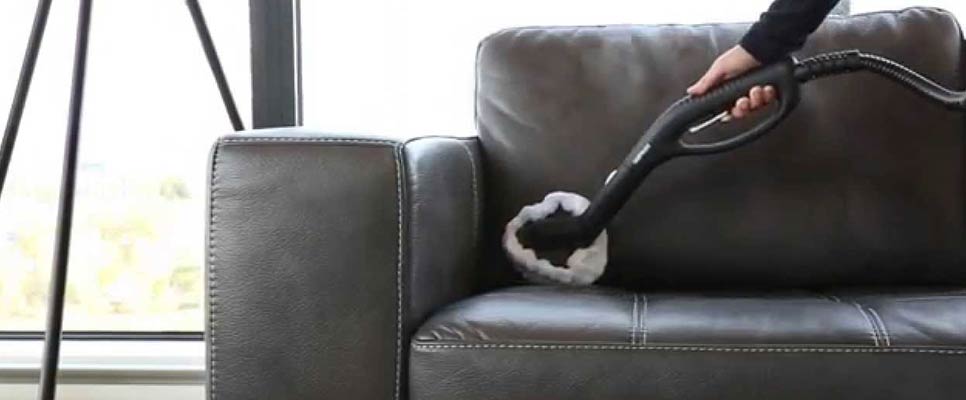Upholstered furniture & fittings play an important role in most homes’ interior decor. They improve the property’s aesthetic, convenience, and liveability, helping to make them important for modern life. The majority of upholstered furniture is made of leather or fabric, and each requires a distinct method of cleaning and upkeep. Maintaining your upholstery clean and sanitary is not only good for your health. However, it also prolongs the life of your upholstered furniture. To keep them gleaming, you might also need the help of cleaners in the city you live in that specialise in upholstery cleaning. If you wish to wash these items yourself, continue reading to learn why you should treat leather and cloth upholstery differently?. Find cleaning advice from professional cleaners as well.

Why You Should Treat Leather and Cloth Upholstery Differently?
Using the same cleaning procedures for cloth and leather upholstery is a huge error that may lead to irreparable damage. For these reasons, any kind of upholstery you have now in your house must be treated differently.
- Their structure and characteristics differ because they are two separate sorts of materials. You could get exceptional results solely on a single material while causing harm to the other if you use the same cleaning approach. Using a spot cleaning agent on cloth upholstery, for instance, may be beneficial, but it could induce leather discolouration.
- When cleaning, keep in mind the price of every material, since leather is often pricey due to the time it needs to age and tan. Cloth upholstery is used right after fabrication, and the price varies based on the count of the thread and purity of the cloth. To achieve the best results and avoid damage to the furniture, you must follow the manufacturer’s instructions for cleaning each sort of material properly.
- Upholsteries made of cloth and leather require different types of care. It is simpler to upkeep cloth upholstery fittings and furniture, which is why they are popular and widely seen in houses. Cloth upholstery doesn’t require as frequent cleaning as quality leather, which might crack, degrade, and seem worn with time if not properly cared for.
- When it comes to eliminating spots and stains, however, leather furniture is far easier to maintain than fabric. Since leather upholstery is impenetrable, it could be wiped clean with comfort and without using elbow grease. Cloth upholstery collects spills and stains rapidly, posing a cleaning challenge. Cleaning a cloth couch may necessitate extra time and effort.
Maintenance Tips for Cloth and Leather Upholstery
Experienced upholstery cleaners have provided experienced advice on how to clean cloth and leather furniture and why you should treat leather and cloth upholstery differently?.
- If you have fabric upholstery in your home, you need to take precautions to keep things from getting dirty or filthy. To help avoid stains and marks, make sure you obtain the proper coverings.
- Vacuum the upholstery once a week and if it becomes dusty. You can maintain your upholstery fresh, hygienic, and smell good by vacuuming it on a routine basis.
- By searching for codes on the tag, you could figure out what kind of upholstery you’re cleaning. Experienced cleaners make sure to follow the instructions carefully to avoid causing harm to the upholstery they clean.
- In a bottle spray, combine one-fourth cup of white vinegar, three fourth cup of warm water, plus two teaspoons of dishwashing liquid to clean fabric upholstery. Before using, give the solution a good shake and saturate any stains or spots entirely. Instead of rubbing the stain, blot it with a damp microfiber cloth and afterwards dry it using a towel to prevent it from getting worse.
- In a bottle spray, combine half a cup olive oil and one-fourth cup of white vinegar to wash leather upholstery. You can use this cleaning solution to remove stains, marks, and filth from leather; without removing its natural gloss and oils.
- Wipe leather upholstery using a microfiber cloth moistened with cleaning formula. I.e. equal parts water and white vinegar on a routine basis. You may treat the upholstery only after wiping it down with light oils like lemon, coconut, olive oil, and so on. By this, you can combine it with white vinegar. Use this agent to the whole upholstery overnight, and afterwards buff the fabric surface using a dry microfiber towel in the morning to preserve its shine.
- If your upholstered fixtures and furniture are excessively filthy and unclean, book expert professional upholstery cleaners to clean them. Specialists have the necessary cleaning supplies as well as years of expertise in sanitising various types of upholstery.
Conclusion
Upholstery made of cloth or leather things in your home should be cleaned regularly to maintain them clean and hygienic. In addition, they must be sanitised to extend their market life and make them seem as clean as new.
So, try uniquely cleaning these upholsteries. In terms of aesthetics, comfort, and lifespan, both cloth and leather furniture offer benefits and disadvantages. They are unquestionably comparable in many aspects. When it comes to cleaning, though, the two are vastly different. For best results, householders should strictly adhere to the manufacturer’s cleaning instructions. Now that you know why you should treat leather and cloth upholstery differently?. So, to make your upholstered things attractive and appealing, use the recommendations listed above.
Also See: How To Remove Cat Hair From Couch?
Published on: March 30, 2023
Last updated on: September 21, 2023
